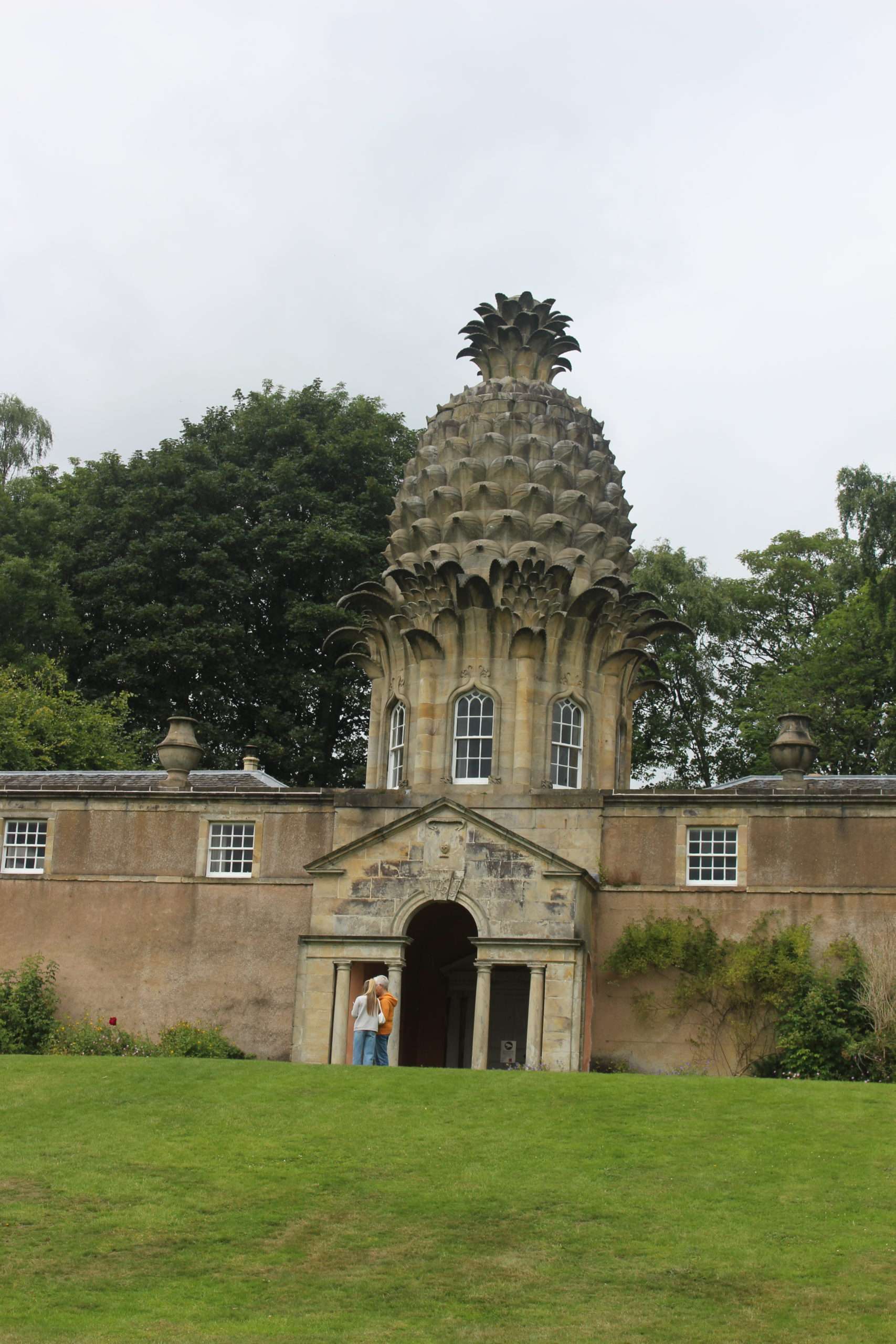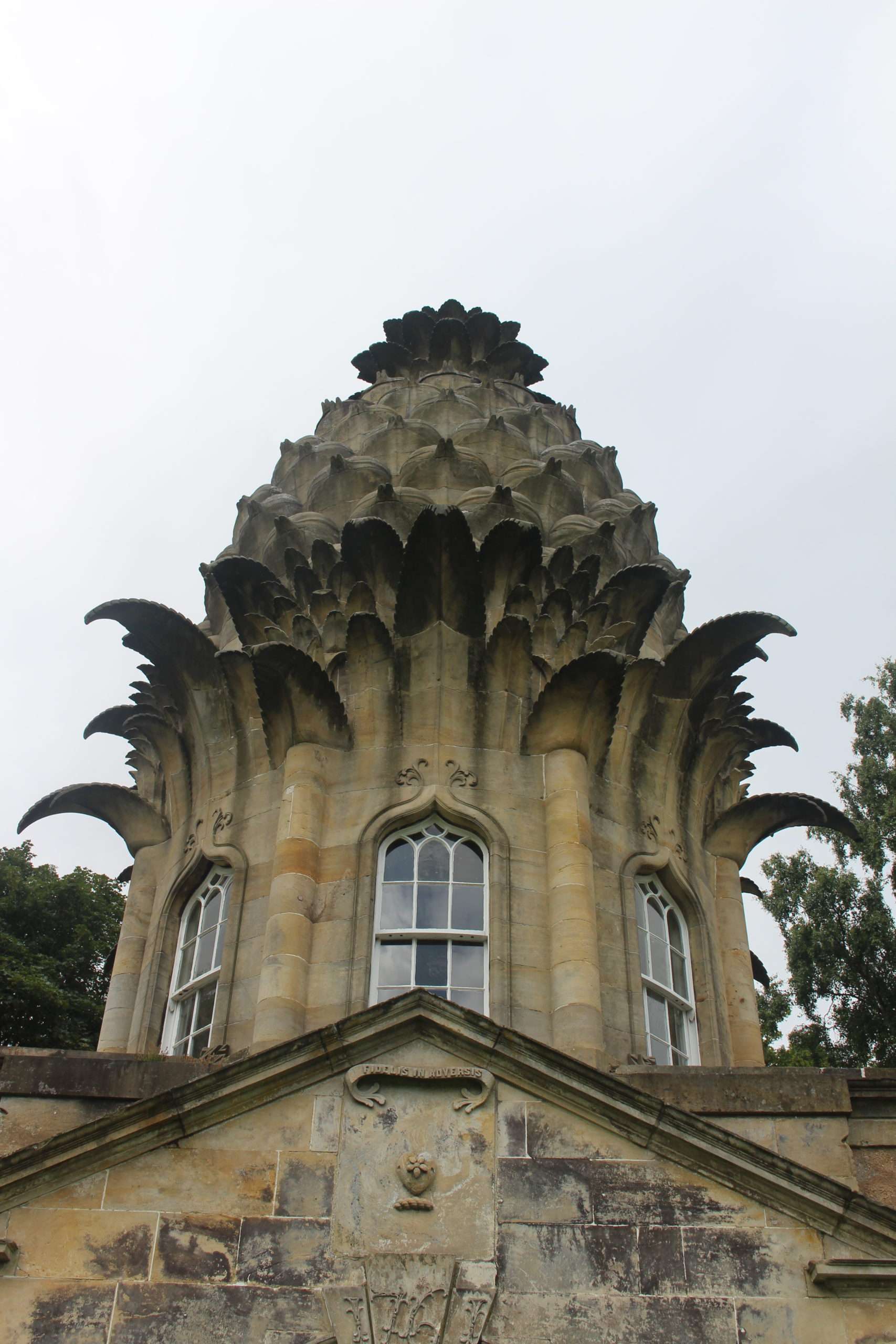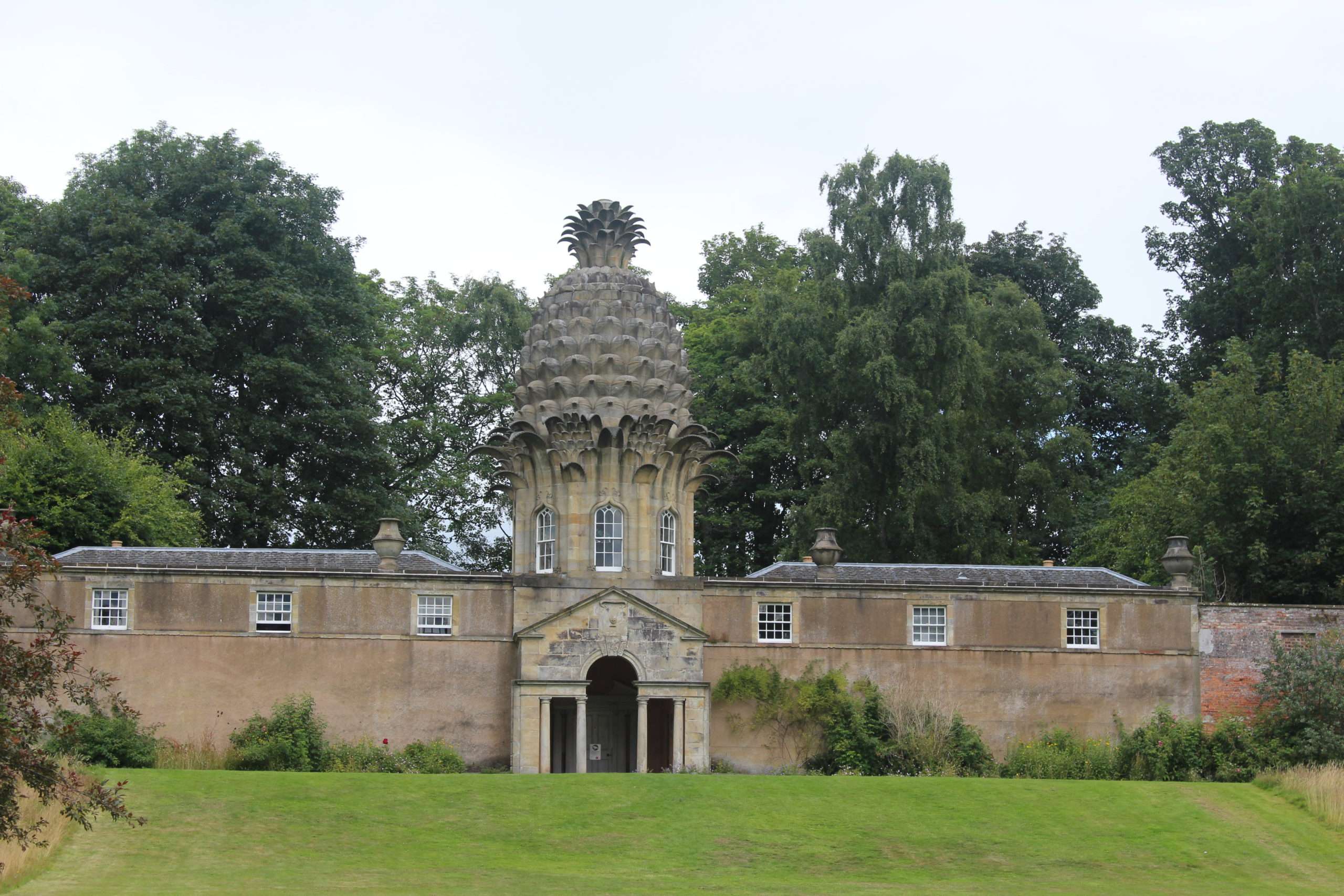The Pineapple is a little harder to find than most National Trust for Scotland (NTS) properties. The access road isn’t actually that long, less than a kilometre from the A905 near Airth and no further from the nearest bus stop. But the signage is minimal and as you pass fields and woodland you’ll wonder if you’re on the wrong track, until you finally get there. Come to think of it, ‘The Pineapple’ is one of the more playful names for NTS properties. But it’s a straightforward description of one of the most whimsical yet stunning buildings in Scotland.
I suppose most people with any connection to Scotland have seen photographs of The Pineapple (the name is sometimes lengthened to ‘The Dunmore Pineapple’) or perhaps have seen it on TV. Nothing can prepare you, though, for how impressive – or how big – it is in real life. It must surely be the largest representation of a fruit anywhere in Scotland, or perhaps anywhere else. If you were planning to create a giant fruit in stone, you’d generally steer clear of pineapples which are complicated and intricate objects. Some of the stonework on the building is delicate, subtle and takes the breath away. But why is there a giant pineapple in the Scottish countryside near the southern end of the Kincardine Bridge?
Dunmore

Christopher Columbus and his crew are generally assumed to have been the first Europeans to encounter pineapples, on the island of Guadalupe in the Caribbean. That was towards the end of the 15th century. Pineapples began to be imported to Europe, and became a delicacy, but only for the very wealthy. They couldn’t be grown outdoors in the United Kingdom, for example, and it was expense to import them. Experiments in growing pineapples in the UK began in the 17th century. I recently visited Oxford Botanic Garden (whose origins are 17th century) and saw pineapples growing there in a steamy glasshouse. There’s a painting in the Royal Collection, which has been dated to the late 1670s, that shows Charles II being presented with a pineapple. The first pineapples are said to have been grown in Scotland in 1731.
In the 18th century the area around The Pineapple was the Dunmore Estate; the name ‘Dunmore’ is still common locally, if you check a map. To the west, for example, is the extensive Dunmore Wood. The Pineapple was built on the instructions of John Murray, the 4th Earl of Dunmore. The building appeared in 1761, without the pineapple, and was intended as a kind of summerhouse in which the Earl could sit and enjoy views of his estate. Murray became Governor of Virginia – the last one before the American War of Independence – from 1771-75. Apparently, it was a custom in Virginia for returning sailors to leave a pineapple (a real one, mind) on their doorstep to indicate that they were at home and able to receive visitors. In 1777 the Earl did the same, in stone, ordering the pineappley bit of the building to be added; he was home, it said, and could receive callers. Incredibly, we don’t know the name of the architect who designed and executed either the original building or The Pineapple.
The detail is stunning – those lifelike stone pineapple leaves each have their own drain to draw away water and prevent damage through a build-up of ice. It’s impressive enough to stand before the structure and examine it from ground level. To be lifted up in a cherrypicker and examine the work at close quarters would be incredible. Perhaps the NTS should consider this…Murray would later become Governor of the Bahamas. Soberingly, his role there involved importing slaves from Africa, so perhaps The Pineapple can also serve as a prompt to reflect on the less savoury aspects of Scotland’s past.
Impressive walled garden

The impressive walled garden that lies to the south is a great place from which to view The Pineapple and is now a green space with flowers, shrubs, trees and even a small orchard. For many years, however, it looked very different. Around the garden were glass-roofed hothouses in which exotic fruit – including, yes, pineapples – were grown for the Earl’s plate. The ghostly outline of those hothouses can still be seen on the walls that survive on either side of The Pineapple. The 4th Earl lived at Dunmore Tower elsewhere on the estate. In 1820 Dunmore Park, a new mansion, was built nearby for the 5th Earl. During the 20th century the estate declined, part of it was bought up by the Countess of Perth and both Dunmore Park and Dunmore Tower became empty and ruinous. The Murrays of Dunmore have lived in Tasmania since the 9th Earl moved there in 1941. Malcolm, the 12th Earl, visited The Pineapple in 1998 to plant a memorial tree. He remains active in many Australian Scots heritage organisations. I expect he reads the Scottish Banner!
By the early 1970s, The Pineapple, the hothouses and other remaining buildings were in danger of collapse. The Countess of Perth donated the building and surrounding grounds to the NTS in 1974. The remains of the hothouses were swept away but The Pineapple and its adjacent buildings were restored by the NTS alongside The Landmark Trust who now lease the buildings from the NTS and rent them out as holiday accommodation; yes, you can stay at The Pineapple! Casual visitors can view The Pineapple, enjoy the walled gardens and walk in the surrounding woodland. The former curling pond is said to be a haunt of the rare great crested newt. Around the site are some interpretative boards that outline the history of the building and the wider estate. I found the photographs of the walled garden with the hothouses up and running a fascinating comparison to the present day. 250 years old and perhaps Scotland’s most bonkers building, The Pineapple is something everyone should make an effort to go and see.
Words and images: David McVey.

